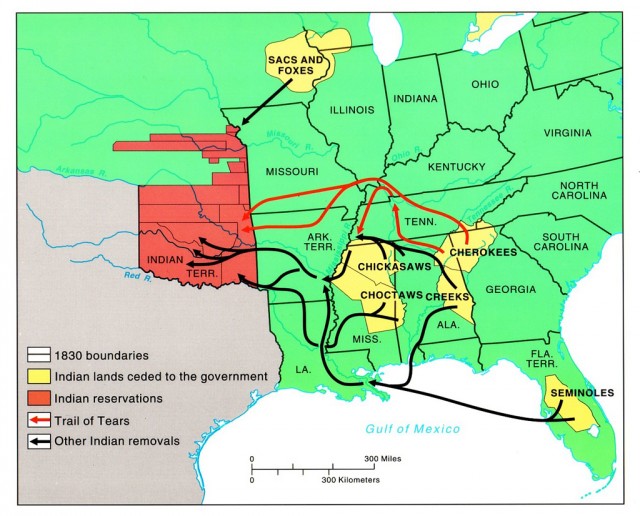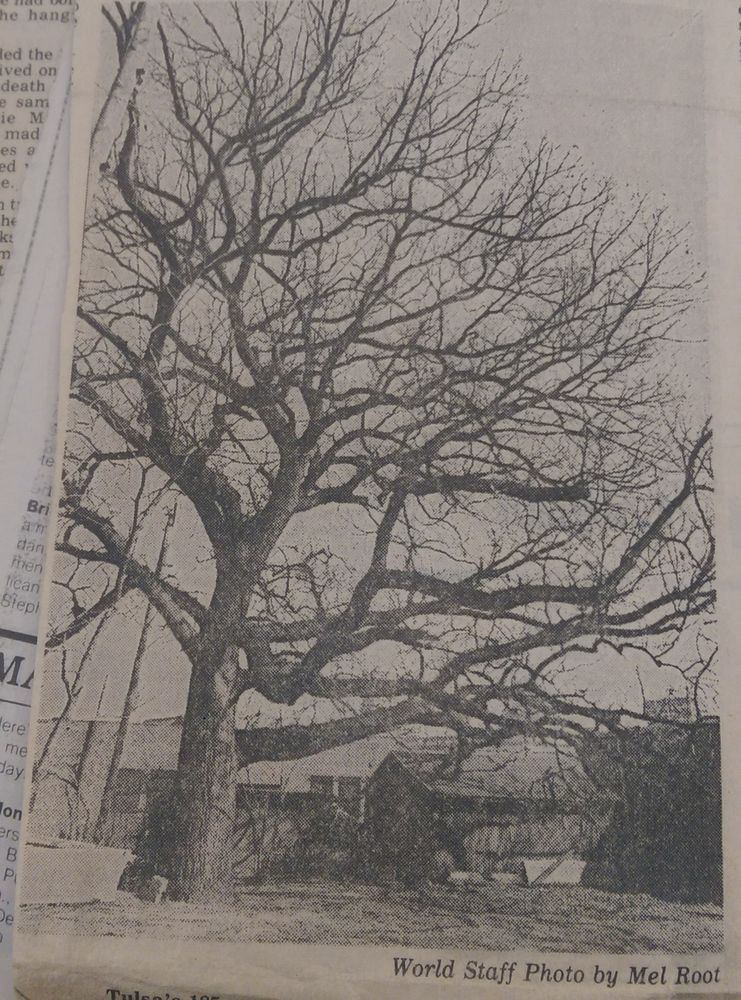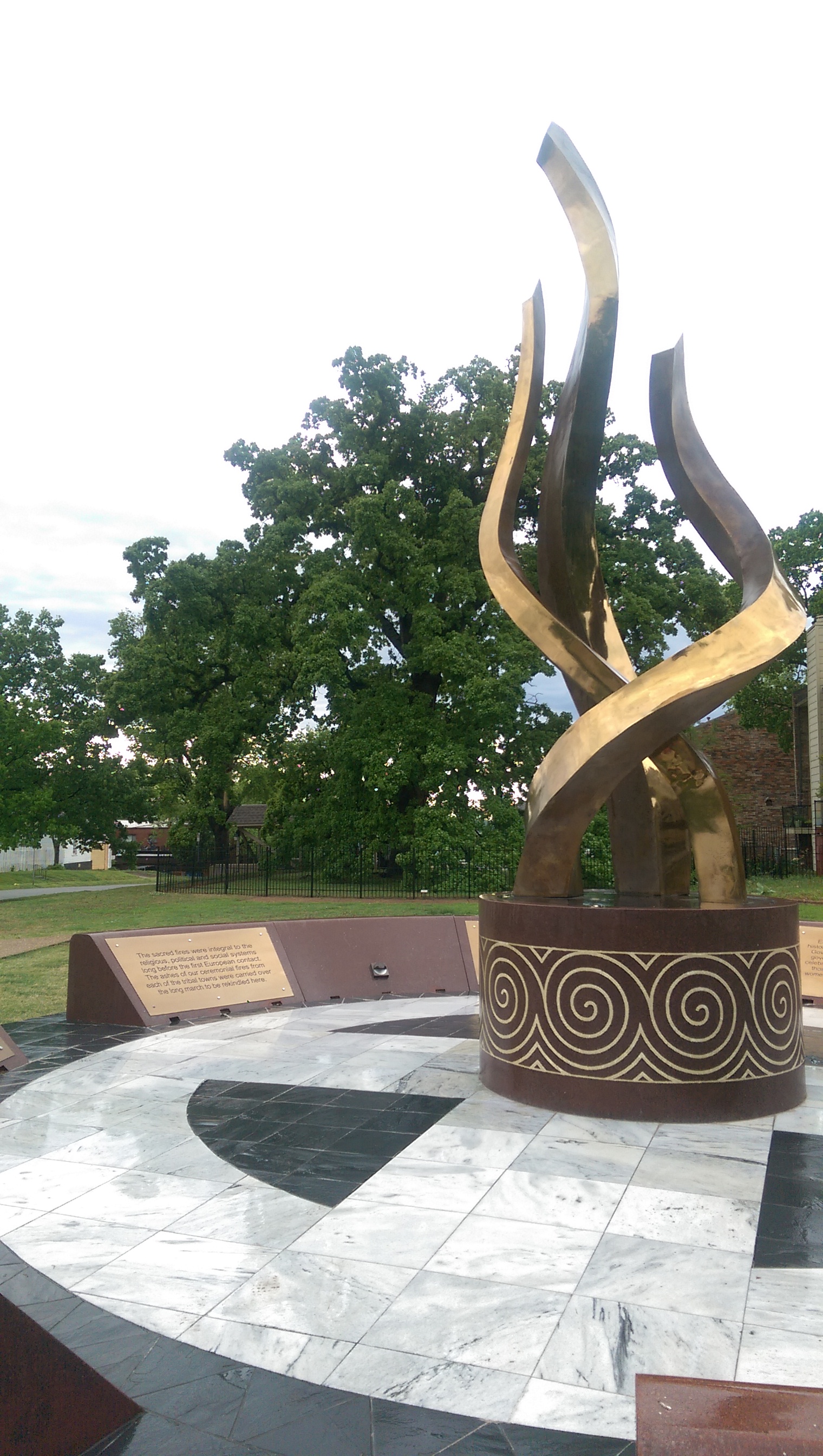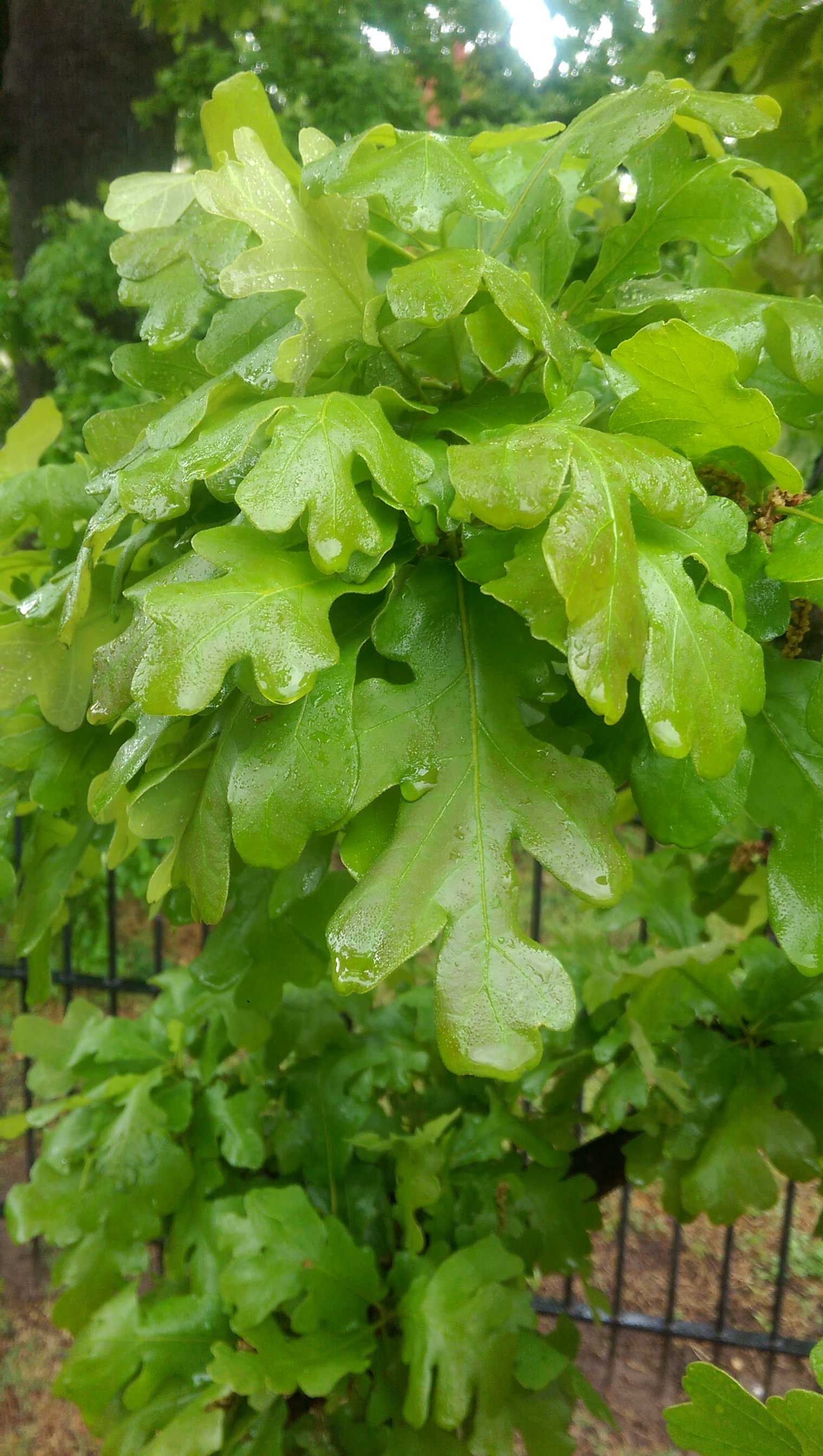| Location |
| 1750 S Cheyenne Ave, Tulsa OK 74114 |
| Contact |
| 918-596-7275 |
| Website |
|
https://www.cityoftulsa.org/culture--recreation/tulsa-parks/administration/tulsa-parks-history.aspx |
The Creek Council Oak Tree is a historic location that marks the foundation of what is now known as Tulsa.
In 1836,A Clan of the Creeks, Locvlke( Turtle Clan), was moved from their homes in Alabama. After a long and horrendous journey, they arrived in the “Indian Territory.” 1 The clan found an oak tree near the Arkansas River and deposited ashes from their homes. With these embers, they started a fire under the oak tree and this mark the beginning of Tulsa.
History of the Locvkle
 Photo by The university Of Maine at Farmington
Photo by The university Of Maine at Farmington
Locvlke, was located in the northwest part of Georgia. They were located near the Cherokee Tribes. This clan was often associated with Hotvlke (Wind Clan). According to Robert Minthorne, a writer, this tribe had a reputation of for getting things done slowly, such as decision making or choosing chiefs. 2
In 1828, the Indian removal act was passed which allowed President Andrew Jackson to remove Native American by force from their homes in the south. These Native American were forced to walk in what is now known as the “Trail of Tears”. The “Trail of Tears” was a journey that caused devastating effects on the Locvkle’s people. Some of the challenges faced were hunger, disease, and exhaustion. According to the Library of Congress, about one-third of the Natives died on the march to the “Indian Territory”. 3
Origin of Tulsa
 Painting of first Council Fire Photo by the Mike Larsen
Painting of first Council Fire Photo by the Mike Larsen
According to the book Tulsa 75 by William Butler, in 1836, the Locvlke arrived in Fort Gibson. They decided to continue their route up the Arkansas Rivers. At Sunset, where the river bends, they crossed a small valley that is surrounded by three small hills. A brave young Native American ran down a trail; the trail was between the Ozark Mountain and the Arkansas River. The trail was along the bank of the Arkansas River. This trail led him to the top of a hill that overlooked the Arkansas River. An Oak tree was at the peak of the hill. Here the young Native sat down below the branches of the tree and deposited the embers they had brought from home. Embers were brought from their brunt town. Along the way in the "Trial of Tears", they would start little fires to keep warm. Every morning one of the members would pick up the embers for their next fire. These embers were brought to the tree. From a flint spark, he started a small fire and the fire spread to the branches of the tree. Soon it became a roaring fire with an orange glow that created long shadows from the other Natives that followed. Here the Locvlke held their Busk, which is a ceremony for thanksgiving. The women wore their bright dresses and the men wore their colorful handkerchief around their head. Beside the tree, they danced around the fire. Their voices were was the only noise in the silent land. 4 The Tree was a representation that marked their long journey in the “Trail of Tears.” This tree represented relief of their struggle and it was a sign of change. This change would make them embrace uncertainty.
History
The Locvlke made a village near the tree. This village or town was named Talasi (meant old down.) The first City Hall meeting was held around the Bur Oak Tree. Here, the Creek Indians held ceremonies until 1898. By 1905, the economy had tremendously grown because of the oil that was located in the area. According to This Land Magazine, There was a big market for investors in the area and big focus was put on the tree.</div>
 The Creek Council in 1968: Photo By Met Root
The Creek Council in 1968: Photo By Met Root 1992 Historic Marker Photo by Tulsa World
1992 Historic Marker Photo by Tulsa World
The Ownership of the Tree changed several times in those years. In 1915, the Creek Indians sold the land to Harry Sinclair who built a mansion near the tree. Then the evangelistic association bought it from Sinclair, they destroyed the mansion. According to The Tulsa Tribune, in 1967, Oral Roberts sold it to a Texas Investor (J. Paul Little), who wanted to make the land into a parking lot.5 This became a legal battle who when all the way to the Supreme Court of Oklahoma. During the legal proceeding, the land went into foreclosure. An auction was scheduled to bid the land away. A day before the auction, H.D. “Nat” Henshaw organized a group of investor that wanted to preserve the historic site. They bided and won the location. In 1976, the Council Oak was added to the National Register of Historic places. The Creek Nation donated the site to the City of Tulsa. The City of Tulsa placed this location under historic preservation zoning in January of 1992.6
Modern Times
As of 2016, the Creek Oak Tree is still alive and healthy. The great Oak is located in midtown Tulsa Park named the Council Oak Park. The address is 1750 South Cheyenne Avenue Tulsa, OK 74119. This park was designed by a creek architect, Richard Thornton. To compliment the tree a sculpture by Creek Sculptor Dan Brook was put in the middle of the park. In Lori Cain's Article, The sculpture, “Morning Prayer”, is bronze flame with a white marble base.7 There are two rims; one has the symbol of the Wind Clan inscribed and the other has the symbol of the Etalwa Cross. The rims are shaped like traditional pottery kilns. They symbolize the trials endured by the Creek Nation. This park where the tree stands still holds annual ceremonies and different events. The Muscogee Tribes still pays tribute to memories of this tree. When one visits this location, one can feel and imagine the relieve of the Native American's after years of suffering. It almost seems as if the heath of the tree represents the strength of the Native American near Tulsa. The tree is a majestic historic location. It is recommend to be toured when one visit Tulsa, Ok.
 "Morning Prayer" Photo by Omar Lopez
"Morning Prayer" Photo by Omar Lopez Great Oak's Leafs in 2016 Photo by Omar Lopez
Great Oak's Leafs in 2016 Photo by Omar Lopez
Reference:
1^: Oklahoma Historical Society. "Time Line of American Indian Removal" (retrieved on April 19, 2016)
<http://www.okhistory.org/research/airemoval.php>
2^: Minthorn, Robin & Alicia Fedelina Chavez. "Indigenous Leadership in Higher Education" at Google Book (retrieved on April 18, 2016)<https://books.google.com/books/about/Indigenous_Leadership_in_Higher_Educatio.html?id=z3HfBQAAQBAJ&printsec=frontcover&source=kp_read_button#v=onepage&q&f=false>
3^: Library of Congress, "Indian Revomal Acts" at LOC.gov (retrieved on April 18, 2016)
<https://www.loc.gov/rr/program/bib/ourdocs/Indian.html>
4^: Butler, William. "Tulsa 75" at Tulsa Public Library Archives (retrieved on April 08, 2016)
5^: Foresman,Bob. "Tulsa Tribune" at Tulsa Public Library Archives (retrieved on April 08, 2016)
6^: Edan, Van. " The LittlePark" at This Land Magazine (retrieved on April 18, 2016)
<http://thislandpress.com/2010/03/31/the-little-park/>
7^: Cain, Lori. " Creek Nation Council Oak , 1750 South Cheyenne Avenue, Tulsa Oklahoma, Midtown Tulsa" at TulsahomeForSale.net (retrieved on April 19th, 2016)


